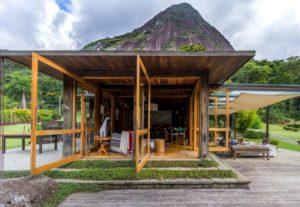
These are some key points to consider for any good design. I first wrote this summary a few years ago but thought it might be of interest here. Although I wrote it based on my company’s principles, it happens to be well aligned to the principles of the Green Building Council as well.
1. Orientation
Getting the orientation and shape of the building right are big steps to being energy-efficient economically. Consider sun shading in summer, warmth from the winter sun, daylight to reduce the need for electric lighting and windows placed to catch cooling breezes.
2. Thermal Mass
Dense materials inside a building help to keep interior temperatures stable and comfortable. This is as important as insulation, even in the moderate Queensland climates.
3. Insulation
Bulk and reflective insulations work together to keep heat in when its needed and out when its not.
4. Low Embodied Energy
Materials should be selected based on the environmental impact and energy required to extract the raw materials, manufacturer the product, transport, install it, maintain it and ultimately dispose of it at the end of its life.
5. Low Toxicity
Low toxicity (low VOC) paints, flooring, cabinetry boards and adhesives used throughout will promote a healthy internal air quality and reduced greenhouse gas emissions.
6. Respect for the Natural Environment
Choose renewable materials, sustainably-managed timbers, recycled, recyclable, compostable and low-pollutant materials. Recycle and reuse construction waste.
7. Think Globally, Act Locally
Choose locally-produced materials and tradespeople where possible to reduce transport energy & greenhouse gases, to support the local economy and the local skills base .
8. Energy-efficient Systems
Passive-solar heating, mixed-mode ventilation systems, daylighting, energy-efficient artificial lighting and automated controllers work together to minimise operational energy use.
9. Water Efficiency
Collect rainwater and use it wherever possible. Use water- and energy-saving fixtures throughout.
10. Education
Demonstrating the effectiveness and beauty of eco-friendly design and products is vital to achieving a sustainable future – the more people understand the issues and the possibilities, the better we can all adapt to the changing world.





